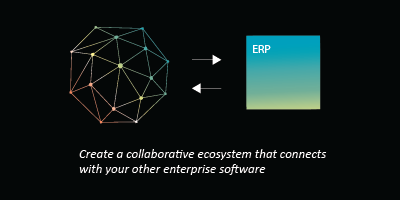Organisations using legacy CTRM and ETRM technology are often missing out on a wide range of business opportunities due to a lack of agility and poorer data visibility than their competitors. As margins continue to decrease, creating faster trade cycles and generating more value from every trade are more important than ever, and it is the organisations undergoing digital transformation that stand to create this value.
Legacy CTRMs have often been in place for many years and processes have built up around their limitations, which can make them difficult to replace, but with more modern, agile systems providing greater advantages than ever before and the challenging competitive environment, now is the time to decide whether these advantages could give your business the agility it needs to thrive.
Why replace an E/CTRM?
A good commodity management system has far more functionality than an older CTRM may lead you to believe. Some E/CTRMs are used primarily for reporting, with actions carried out offline and team members updating the system with what they’ve done after they’ve already done it. Not only does this mean that by the time data is available in the system it’s already out of date, but also that workloads are increased by the reporting obligation and the risks of errors and omissions are not reduced by having a CTRM.
In contrast, Gen10’s commodity management technology is all about allowing you to work better, together. Because our workflow automation engines allow you to carry out many processes within the system automatically, you benefit from faster processing across front- and back-office teams, and there is no need to log activities that have already been completed.
With automated processes including sending contracts on to the next team, document generation, notifications of outstanding actions, and powerful logistics functionality, the risk of people forgetting to action or record a task is greatly reduced. And because our workflow and pricing engines use data already input into the system, the risk of errors is also reduced, even down to the pricing engine calculating invoices based on your own premiums and deductibles formulae.
The ability to carry out actions using the system, rather than using it after the fact also means that reports are updated in real-time throughout the day as each contract progresses, rather than waiting for end-of-day or month reports. As positions are updated in real-time in the system, you have better control over your risk factors. Gain instant access to P&L reporting, check clients’ credit limits on the spot and maintain complete position visibility to give you the optionality you need to generate value from every trade.
The other major advantage of Gen10’s collaborative commodity management technology is that it allows you to share data and facilitate tighter collaboration between departments, timezones and trading partners; including trade finance providers, warehouses and inspection agencies. Our collaborative approach also means that you can connect your commodity management technology to your other systems with ease for simple data sharing across departments, apps and technology; for example, integrating directly with your ERP.
Why choose a One App at a Time implementation?
Replacing a large IT investment almost always presents significant business disruption. Gen10’s CommOS is an ecosystem of apps and APIs, not a monolithic CTRM, so each app can be implemented individually for minimal disruption. And because each app is a stand-alone cloud solution, you should expect to see a reduction in ongoing maintenance costs.
You can also choose to implement the apps that will have the greatest impact on your business first, moving on to the next app once you are seeing results from using the first. For example, you may use Gen10’s Contract.Manager to speed up your existing CTRM whilst drawing up the requirements for your full CTRM implementation.
Another advantage of CommOS is that each app solves a different problem in commodity supply chains, giving you much broader commodity management functionality, not limited to CTRM, and the flexibility to only pay for technology that will help your business. From supplier audit and inspections, to fast deal capture, risk management and logistics, create a commodity management ecosystem that integrates with other apps and technologies, so that you can work better, together.
The Gen10 team are experienced in replacing legacy CTRM systems and this is why we have developed collaborative technology to make your migration journey easier. Once set up for your existing CTRM, our migration tools allow you to transfer all your historic data into your new Gen10 system at the click of a button. You can re-transfer data as many times as you need to, so you have the flexibility to transition gradually from your existing technology and easily use the two systems in parallel as you continue to onboard users.
Collaborative commodity management technology provides more benefits than an older CTRM system. It gives you the data you need to make better decisions and improve trade cycles, reduces the workload associated with each trade, reduces risk and allows you to collaborate better for better results. And with Gen10’s “one app at a time” approach, implementing a new commodity management system is easier than ever before.

Want to read more?
Subscribe now for monthly updates
By submitting your details you agree that we can store your data and communicate with you. You can opt out of these communications at any time. Read all in our Privacy Policy.



